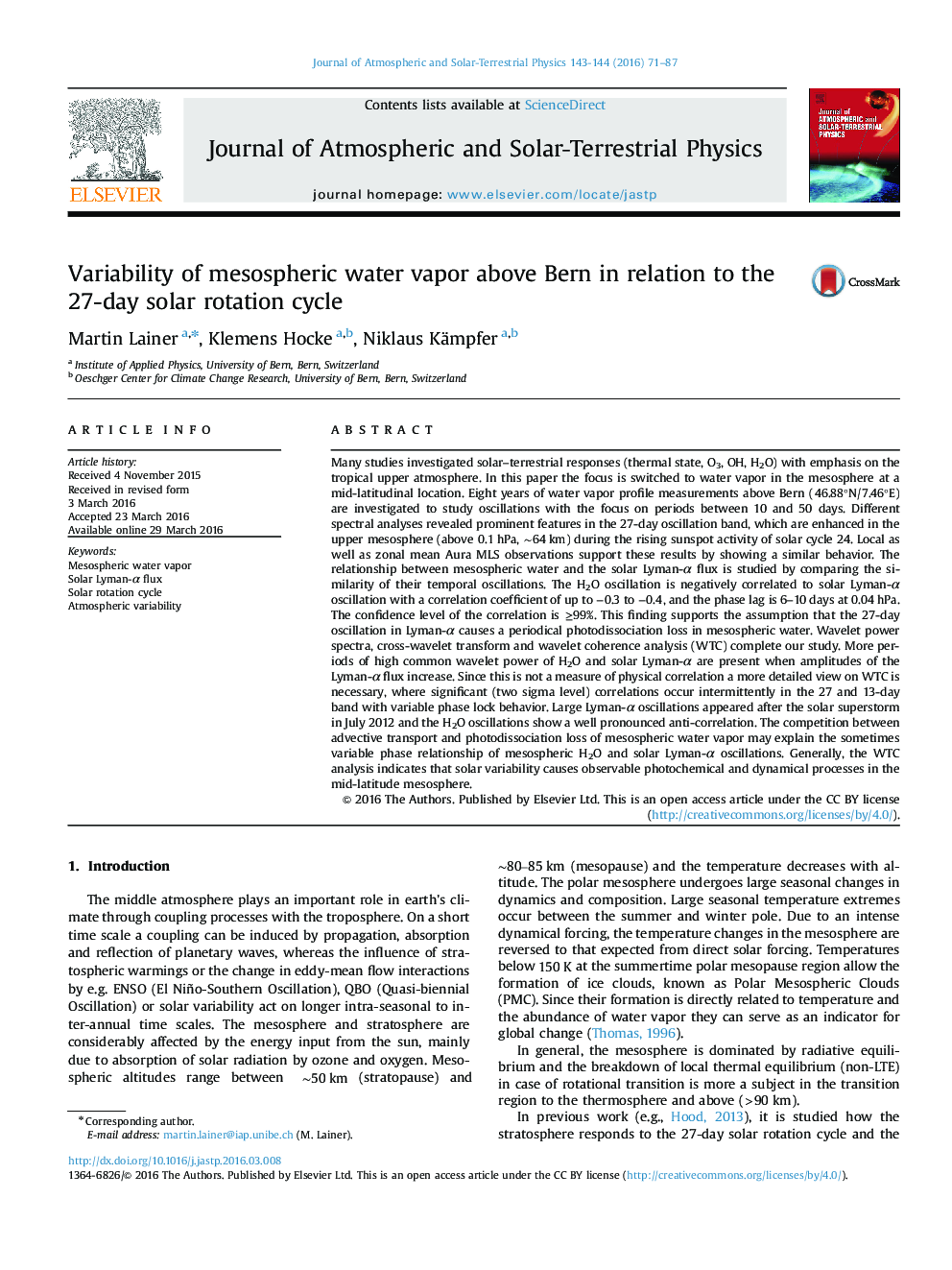| Article ID | Journal | Published Year | Pages | File Type |
|---|---|---|---|---|
| 8139911 | Journal of Atmospheric and Solar-Terrestrial Physics | 2016 | 17 Pages |
Abstract
Many studies investigated solar-terrestrial responses (thermal state, O3, OH, H2O) with emphasis on the tropical upper atmosphere. In this paper the focus is switched to water vapor in the mesosphere at a mid-latitudinal location. Eight years of water vapor profile measurements above Bern (46.88°N/7.46°E) are investigated to study oscillations with the focus on periods between 10 and 50 days. Different spectral analyses revealed prominent features in the 27-day oscillation band, which are enhanced in the upper mesosphere (above 0.1hPa, â¼64km) during the rising sunspot activity of solar cycle 24. Local as well as zonal mean Aura MLS observations support these results by showing a similar behavior. The relationship between mesospheric water and the solar Lyman-α flux is studied by comparing the similarity of their temporal oscillations. The H2O oscillation is negatively correlated to solar Lyman-α oscillation with a correlation coefficient of up to â0.3 to â0.4, and the phase lag is 6-10 days at 0.04hPa. The confidence level of the correlation is â¥99%. This finding supports the assumption that the 27-day oscillation in Lyman-α causes a periodical photodissociation loss in mesospheric water. Wavelet power spectra, cross-wavelet transform and wavelet coherence analysis (WTC) complete our study. More periods of high common wavelet power of H2O and solar Lyman-α are present when amplitudes of the Lyman-α flux increase. Since this is not a measure of physical correlation a more detailed view on WTC is necessary, where significant (two sigma level) correlations occur intermittently in the 27 and 13-day band with variable phase lock behavior. Large Lyman-α oscillations appeared after the solar superstorm in July 2012 and the H2O oscillations show a well pronounced anti-correlation. The competition between advective transport and photodissociation loss of mesospheric water vapor may explain the sometimes variable phase relationship of mesospheric H2O and solar Lyman-α oscillations. Generally, the WTC analysis indicates that solar variability causes observable photochemical and dynamical processes in the mid-latitude mesosphere.
Keywords
Related Topics
Physical Sciences and Engineering
Earth and Planetary Sciences
Geophysics
Authors
Martin Lainer, Klemens Hocke, Niklaus Kämpfer,
